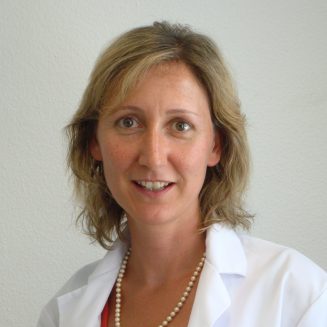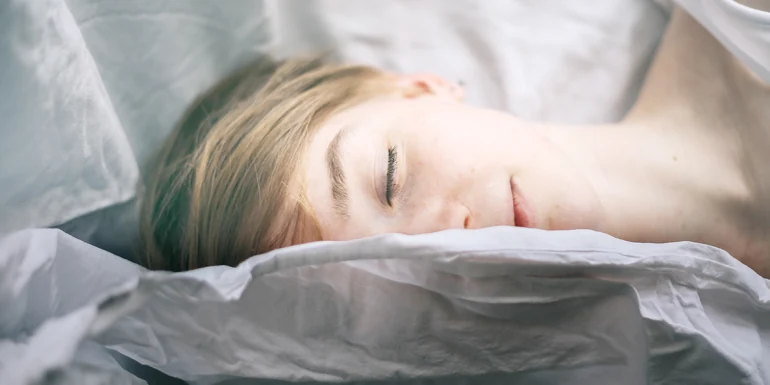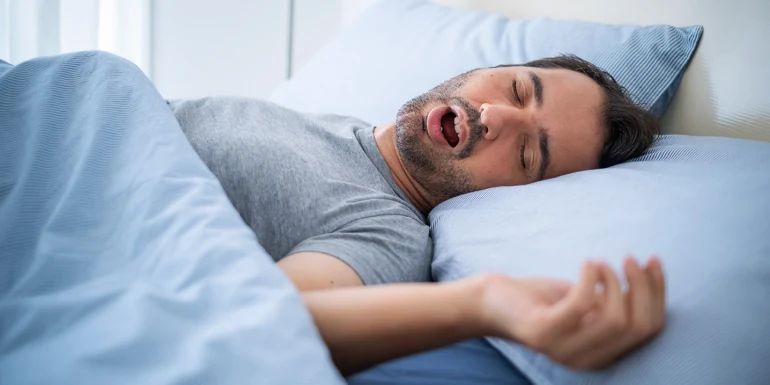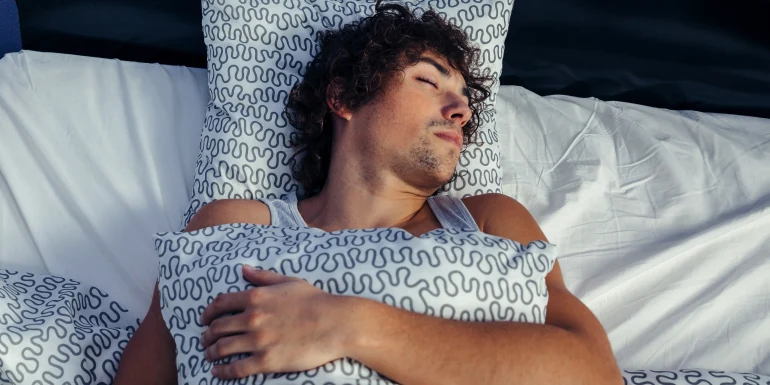
Causes and symptoms of narcolepsy
Narcolepsy is known as “sleeping sickness” or “snooze addiction”. Sleepiness or muscle weakness (cataplexy) makes life difficult for narcoleptics. Find out here how it manifests itself and is treated.
Lazybones or shirkers – these are just some of the prejudices narcoleptics have to face. The extreme sleepiness and constant falling asleep irritates work colleagues, friends and family. That’s why it is important for sufferers to explain the illness to those around them. Some 3,500 people in Switzerland suffer from this disorder.
Causes of narcolepsy
Narcolepsy is not triggered by psychological problems. Neither is it a mental or mood disorder. Sufferers lack the cells that produce hypocretin (also called orexin), a neurotransmitter that helps regulate sleep–wake cycles. Narcolepsy is therefore when waking and sleeping rhythms become disturbed. So far, no cure has been found for the illness. Researchers have long since suspected that the immune system or a particular susceptibility to infections may potentially be what triggers it. A new study now shows that the immune cells, or T cells, cause inflammation which leads to neuronal damage or the complete destruction of the nerve cells that produce hypocretin. Based on the findings of this recent study, narcolepsy is evidently caused by an immune response.
Various symptoms of narcolepsy
The most noticeable symptoms are sudden attacks of sleep or excessive daytime drowsiness. Sufferers feel an irresistible urge to sleep and are completely powerless to resist it. Unless these symptoms appear, however, narcolepsy often goes undiagnosed. This results in the constant state of snooziness being seen as normal. Further symptoms of narcolepsy:
The muscles go weak. Sufferers can no longer speak clearly, lose their voice, collapse and fall over. This weakening of the muscles can last several minutes. Cataplexy is a clear indication of narcolepsy. It is frequently triggered by a spontaneous emotion, such as laughter, anger, stress or sadness. Three-quarters of narcolepsy patients show signs of cataplexy.
Sufferers can no longer move or lose the ability to speak when falling asleep, waking up or completely relaxing. This is often accompanied by the feeling of not being able to breathe, although the respiratory muscles are not paralysed. Sleep paralysis can also last up to a few minutes.
Narcoleptics are fully conscious when they experience these dreamlike hallucinations. They find it difficult to distinguish between the hallucinations and the real world. These unreal sensations often occur when falling asleep or waking up. Hallucinations are not a daily occurrence and often disappear for years before reappearing.
Some individuals suffer from superficial sleep. They become keenly aware of virtually every sound. Sometimes sleep is interrupted by hours of wakefulness. Including suddenly waking up for no reason. Sleep disorders often get worse with long-term illnesses.
Narcolepsy treatment
While a cure for the illness has yet to be found, medication and behavioural strategies can be used to reduce the symptoms of narcolepsy. Medication is prescribed in consultation with a doctor and according to the narcoleptic patient’s individual symptoms. Possible behavioural strategies for narcolepsy include:
- Get enough sleep: the older you get, the less sleep you need. 18- to 64-year-olds need around seven to nine hours of sleep; over 65s around seven to eight.
- Take naps and rest: naps and rest throughout the day help to alleviate symptoms. The number and length vary from person to person.
- Get plenty of exercise in your daily routine: try to avoid monotone and repetitive tasks. It is important to incorporate some sort of physical activity into your everyday personal and professional life.
- Drink less alcohol and eat light: heavy meals and alcohol make you feel sleepier. Therefore, if possible, sufferers should refrain from both.
- Go to bed at the same time: this helps to maintain a steady daily routine. Narcoleptics who are often awake for longer periods during the night should get up. A relaxing activity can help you feel sleepy again.
Sharing experiences with other sufferers can also help, for example in a self-help group.

Daniela Janssen (lic. Phil. somnologist and psychotherapist FSP) is a member of the Specialist Somnology Team at the Zentrum für Schlafmedizin Hirslanden Zürich (centre of somnology). She advises adults, young people and children with sleeping disorders. As a psychotherapist, she also works in her own practice. Daniela Janssen was available to the editorial team in an advisory and editorial capacity for this article.
Further information



Newsletter
Find out more about current health issues every month and get all the information you need about our attractive offers from all Helsana Group companies * delivered by e-mail to read whenever it suits you. Our newsletter is free of charge and you can sign up here:
We did not receive your information. Please try again later.
* The Helsana Group comprises Helsana Insurance Company Ltd, Helsana Supplementary Insurances Ltd and Helsana Accidents Ltd.